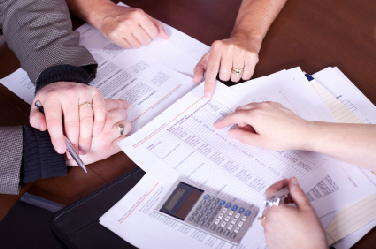Recent Articles
Popular Makes
Body Types
Tips on Getting a Car Loan After Bankruptcy

Buying a car after bankruptcy is not impossible. In fact, some experts think that obtaining a car loan after bankruptcy is one of the best ways a consumer can rebuild creditworthiness.
While there are many ways to obtain a car loan after bankruptcy, it is better to get after bankruptcy auto financing from an established lender, and it is best to wait until you’ve had a chance to start rebuilding your credit rating through secured or unsecured credit card accounts before trying to buy a car after bankruptcy.
Buying a Car After Bankruptcy: Rebuild Your Credit
To avoid paying more than you should to get a car loan after bankruptcy, wait as long as you can before getting a new set of wheels. During that time, rebuild your credit by obtaining three credit accounts that will be reported to the three major credit agencies: Experian, Equifax, and TransUnion.
When rebuilding your credit rating, try to open unsecured lines of credit. That said, even if a cash deposit equal to the credit limit is required to secure the credit cards, it is important to get, and use, new credit accounts in order to start re-building your credit rating.
The longer you can wait while rebuilding your credit, the more likely it is that you can obtain a loan with favorable terms.

Buying a Car After Bankruptcy: Pay a High Interest Rate
If you can’t wait to rebuild your credit before buying a new or used car, you can still obtain a car loan after bankruptcy. However, you should expect to pay a higher interest rate, likely double, or even triple, what a consumer with good credit would pay for a car loan.
Some used car dealers are known as “Buy Here, Pay Here” dealers, which specialize in providing after-bankruptcy car loans. If you choose to buy a car through such a dealer, be sure that the loan you’re given will be reported to the major credit agencies. Otherwise, choosing this path will not help you to rebuild your credit rating.
That’s why, when buying a car after bankruptcy, it is advisable to obtain a loan from an established financial institution.

Buying a Car After Bankruptcy: Be Appealing to a Lender
Before applying for a bank loan, you should know two things. First, if your previous car was repossessed, a lender is unlikely to give you a car loan because the assumption is that if you couldn’t find a way to make payments on your previous vehicle, you’re unlikely to find a way to make payments on the new vehicle if you once again find yourself in difficult financial straits. If you’re in this situation, try to have the repossession removed from your credit history.
Second, if you have a poor driving record, a lender is unlikely to give you a car loan because the assumption is that the asset used to secure the loan, the car, will not remain in good condition, and thereby retain as much of its value as possible, during the term of the loan.
Banks are more interested in providing a car loan after bankruptcy if you don’t have a repossession on your credit report, and if you have a good driving record.

Buying a Car After Bankruptcy: Make a Big Down Payment
Another way to make yourself more appealing to a lender is to make a sizable cash down payment on the new or used vehicle. By doing so, you help to eliminate some of the lender’s risk associated with the car loan, because a substantial down payment often covers any depreciation associated with the vehicle.
What that means is that if you default on the car loan, the vehicle will be worth enough to cover the outstanding loan balance, thus eliminating or substantially reducing a lender’s loss on the loan.
If you can afford to make a cash down payment, lenders prefer to see one amounting to 20% of the purchase price.

Buying a Car After Bankruptcy: Get a Co-Signer
Alternatively, if you can’t afford to make a large down payment on the new or used car, banks are usually willing to provide a car loan with bankruptcy on your record as long as someone with good credit agrees to co-sign the loan for you. What this means is that the co-signer will be liable for the unpaid loan balance in the event that you default on the loan, so keep this in mind when asking a family member or friend to do this favor for you.
